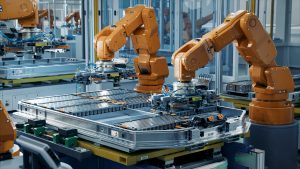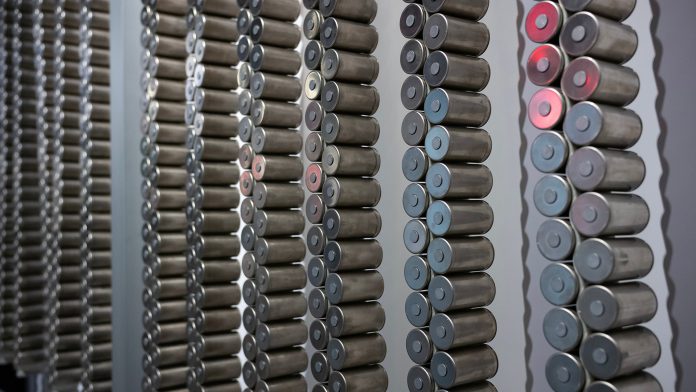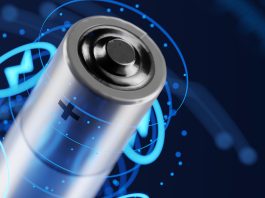Anoop Suvarna, Global Battery Materials Manager for Energy Storage at Pall Corporation, discusses how cathode active material filtration technology optimises the efficiency of lithium batteries for use in EV manufacturing.
A global drive to reduce emissions and encourage more sustainable transportation is prompting advancements in EV manufacturing. Mandates in some territories for manufacturers to produce higher percentages of EVs and state-backed exports from other countries are fuelling competition.
Meanwhile, research on variable battery materials and debates on vehicle size and charging infrastructure are leading to new avenues being explored.
For most auto manufacturers, lithium-ion batteries remain the best option to power their vehicles due to their energy capacity, fast charging, low discharge rate and lifespan.
Yet astute battery producers know they must develop units that operate more efficiently than their rivals to be preferred suppliers. Each battery’s four functional components – the cathode, anode, separator, and electrolyte – contribute to its efficiency.
The formation of the cathode – or positive electrode – is the most complex process in manufacturing EV batteries, and its composition via the cathode active materials can account for around 40% of the battery’s cost. This elemental part of the technology also significantly affects the battery’s performance.
These materials must be as pure as possible to allow the battery to operate at an optimal level. Contaminants diminish performance and must be eliminated.
The key to cathode active materials
Cathode active materials (CAM) are typically composed of metal oxides that are ground and mixed into a water-based slurry and then coated onto an aluminium foil, which is then compressed (known as ‘calendaring’) to create the cathode electrode.
The most common cathode materials used in lithium-ion batteries include lithium cobalt oxide, lithium manganese oxide, lithium iron phosphate, and lithium nickel manganese cobalt oxide.
CAM manufacturers face several challenges due to the presence of other chemicals and materials that need to be removed and the requirement to meet specifications on particle size and levels of contaminants. They must also preserve the structure of crystals and control their surface area and porosity.
This is where high-performance filtration systems are needed to achieve the requisite levels of purity. These systems remove undissolved salts, iron contaminants, and larger particles from the precipitated mix at various stages in the process.
A range of coarse metallic strainers, 0.3-5µm depth filters, and regenerable ceramic filters can achieve liquid, chemical and gas purity levels, making the final cathode electrode more efficient and stable.
Contamination in the cathode active material slurry mix will reduce the electrode’s effectiveness, resulting in lower battery performance and shorter discharge life.
With increased cathode active material purity, manufacturers can maximise performance, but only if other complementary factors, such as electrolyte cleanliness and polymeric separator materials, are also of a high standard.
The processes for creating the anode are similar, but graphite is mixed with a binder (often polyvinylidene fluoride) and a solvent such as N-methyl-2-pyrrolidone. This anode slurry is coated onto copper foil.
Preventing corrosion from the electrolyte
The electrolyte’s cleanliness is necessary to transfer ions between the anode and cathode. Lithium salts and organic carbonate solutions, such as ethylene carbonate or dimethyl carbonate, must be pure enough to enable ionic conductivity, chemical and electrochemical stability, and thermal stability.
Controlling water content is also essential. Moisture in the electrolytes can result in hydrofluoric acid (HF) from fluoride lithium salts. As HF can corrode certain metals – such as those in internal battery components – it is critical to prevent moisture from encountering the electrolytes.
Due to the high degree of acidity of the electrolytes, chemically resistant filter materials and fluoropolymer-coated stainless steel filter vessels are recommended. Filters with fine particulate removal ratings (0.45m-2m) are appropriate to achieve high levels of electrolyte cleanliness.
Quality control to meet EV battery manufacturing demand
Batteries require separators to prevent short circuits and ensure safe operation. Several steps are involved in producing them, with challenges to ensure cleanliness, uniformity, robustness, and porosity for ion transportation.

To achieve quality control, manufacturers must consider the homogeneity and purity of cathode active materials, such as plasticines and additives, temperature and thickness control, and constancy of production speed.
Polymer melt filter technology ensures chemical companies can supply high-quality polymeric separators to EV battery manufacturers. Purification steps include filtration of the molten polymer before film formation and filtration of various other additives and coatings used in the process.
As the production of lithium-ion batteries grows to meet the global demands of EV battery manufacturing, battery suppliers must consider how to optimise their place in the value chain. A battery’s performance has a major impact on a vehicle’s overall performance, safety, durability, and range.
Removing contaminants is vital in achieving purity of the various materials, so filtration will be crucial in producing batteries that will power the world’s growing fleets of electric vehicles.









